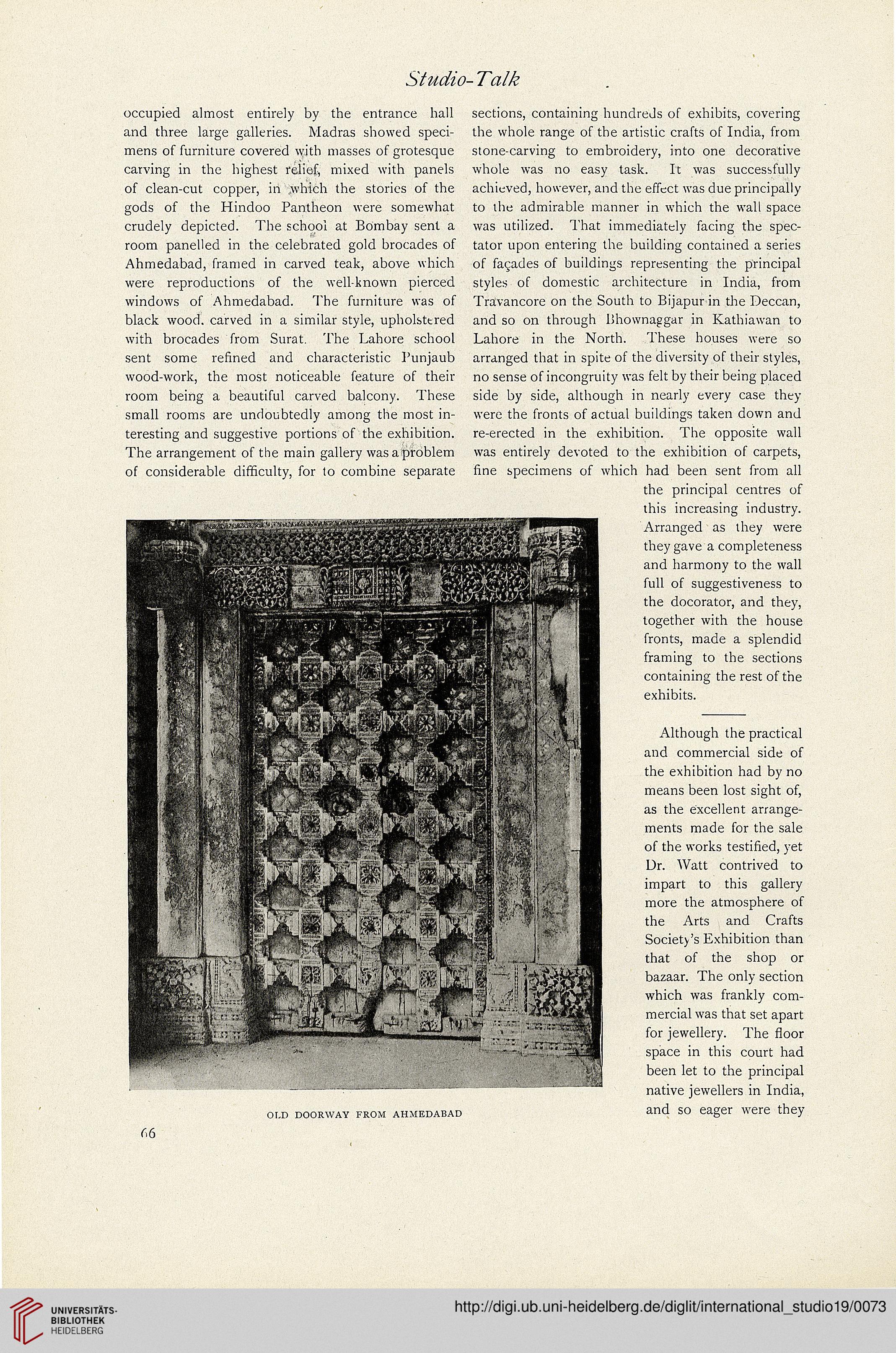occupied almost entirely by the entrance hall
and three large galleries. Madras showed speci-
mens of furniture covered with niasses of grotesque
catving in the highest relief, mixed with panels
of clean-cut copper, in which the stories of the
gods of the Hindoo Pantheon were somewhat
crudely depicted. The schooi at Bombay sent a
room panelled in the celebrated gold brocades of
Ahmedabad, franted in carved teak, above which
were reproductions of the wellknown pierced
windows of Ahmedabad. The furniture was of
black wood. carved in a similar style, upholstered
with brocades from Surat. The Lahore school
sent some refined and characteristic Punjaub
wood-work, the most noticeable feature of their
room being a beautiful carved balcony. Thcse
small rooms are undoubtedly among the rnost in-
teresting and suggestive portions of the exhibition.
The arrangement of the main gallery wasaproblem
of considerable dif&culty, for to combine separate
sections, containing hundreJs of exhibits, covering
the whole range of the artistic crafts of India, fronr
stone-carving to embroidery, into one decorative
whofe was no easy task. It was successfully
achieved, however, and the effcct was due principally
to the admirable manner in which the wall space
was utilized. That immediately facing the spec-
tator upon entering the building contained a series
of faqades of buildings representing the principal
styles of domestic architecture in India, from
Travancore on the South to Bijapur in the Deccan,
and so on through Bhownaggar in Kathiawan to
Lahore in the North. These houses were so
arranged that in spite of the divcrsity of their styles,
no sense of incongruity was felt by their being placed
side by side, although in nearly every case they
were the fronts of actual buildings taken down and
re-erected in the exhibition. The opposite wall
was entirely devoted to the exhibition of carpets,
fine specimens of which had been sent from all
the principal centres of
this increasing industry.
Arranged as they were
they gave a completeness
and harmony to the wall
full of suggestiveness to
the docorator, and they,
together with the house
fronts, made a splendid
framing to the sections
containing the rest of tne
exhibits.
OUD DOORWAY FROM AHMEDABAD
Although the practical
and commercial side of
the exhibition had by no
means been lost sight of,
as the excellent arrange-
ments made for the sale
of the works testified, yet
Dr. Watt contrived to
impart to this gallery
more the atmosphere of
the Arts and Crafts
Societ/s Exhibition than
that of the shop or
bazaar. The only section
which was frankly com-
mercial was that set apart
for jewellery. The Hoor
space in this court had
been let to the principal
native jewellers in India,
and so eager were they




